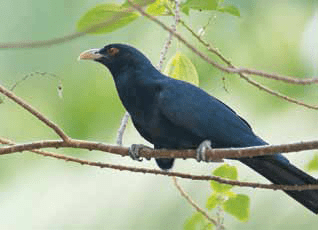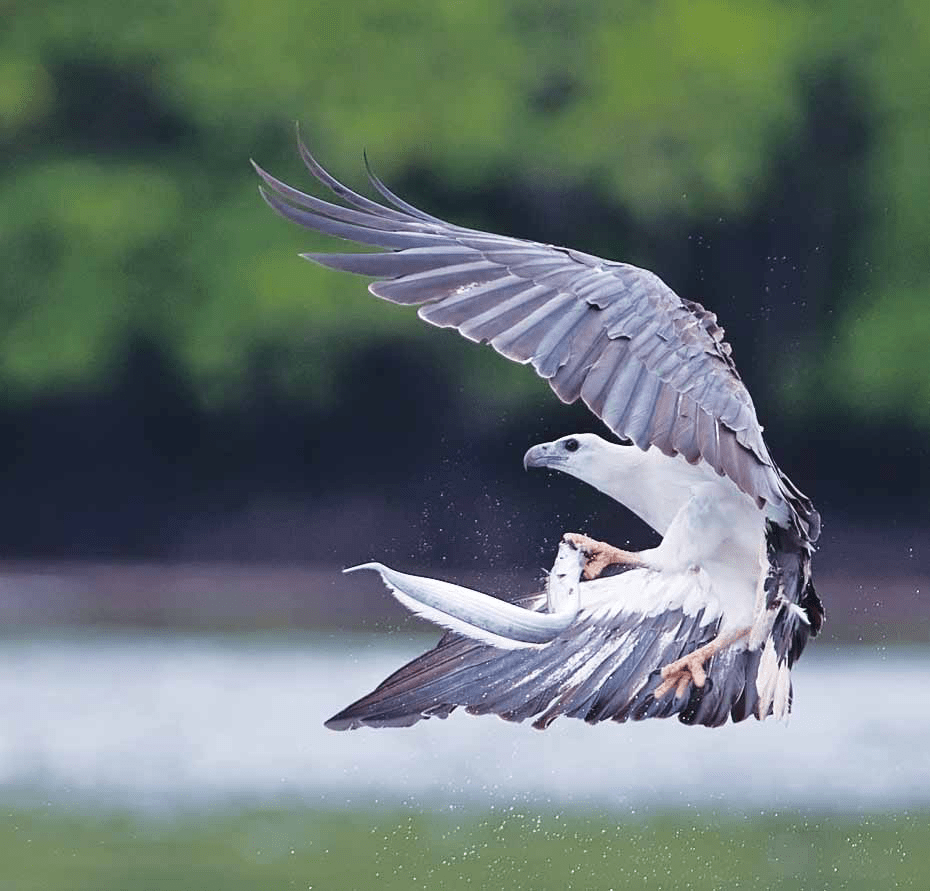Stories > Wings of Change
Wings of Change
In the shift from jungle to a city in a garden, birds here have adapted to the changing environment, where some enjoy a new lease of life.
By Wee Yeow Chin
Birds are ubiquitous, even in an urban jungle like Singapore where thickets of tower blocks outnumber and “out-tower” trees. You can’t miss House Crows picking among garbage for food, Javan Mynahs foraging from hawker centre tables and flocks of pigeons in housing estates.
They’re some of Singapore’s most common birds, but there’s little love for them. The Asian Koel has made itself unpopular waking people with its pre-dawn calls, and efforts to drive shrieking starlings roosting at sunset away from glamorous Orchard Road have made the news.
Birds have been around longer than humans, but today we seem to have forgotten how they have inspired us — with the freedom of flight, with their plumage and song, with their delightful diversity.
Misunderstood
Those irked by these urban foragers have hissed, “Rats with feathers!” China held that opinion when it encouraged mass eradication of sparrows in the 1950s. The country soon regretted this when locusts, unchecked by the sparrows’ omnivorous feeding habits, proliferated and eventually destroyed the country’s rice crops. If birds didn’t help clear our crumbs, it’s likely we’d have a larger insect and rodent problem. Birds are nature’s pest control brigade.
Another service, which should be appreciated by all in this City in a Garden, is that birds pollinate flowers and disperse seeds. They have always been agents of forest regeneration. Readers may recall British tales of miners carrying canaries into coal mines — if the canary showed distress or died, it was time to get out of the tunnels! It was a warning system based on the bird’s sensitivity. As American ornithologist Roger Tory Peterson, author of the first modern field guide on birds in 1934, noted, “If birds are in trouble, we know we’ll soon be in trouble.”
Healthy birds indicate healthy environments.
Extinction and Encouragement
But birds have been in trouble here. Ornithologists Wang Luan Keng and Christopher Hails gave a breakdown of the nation’s bird species in their 2007 An Annotated Checklist of the Birds of Singapore. Of 364 bird species found here, 142 are residents (live and raise young) or presumed residents, 200 are visitors (migrants), and the remaining 22 have been introduced by humans. A total of 44 species, of which 41 are forest birds, have gone extinct locally. This happened mostly during the early 1950s, when Singapore’s forests were cleared for development. Beyond this, continuing fragmentation of forests and loss of wetland habitats have threatened another 50 species. Recent years, however, have seen the tide shifting as local awareness of protecting natural habitat grows. The creation of green corridors, protected areas like the Sungei Buloh Wetland Reserve, and public pressure to preserve wild spaces like Chek Jawa and the Rail Corridor will hopefully slow this threat.
Bird populations also reflect Singapore’s urbanisation. Apart from local extinction (many birds extinct here do exist in Malaysia), the adaptable species have prospered — mynahs, crows and pigeons have taken to town spaces in bold numbers, crowding out once ubiquitous flocks of sparrows. Open country birds like Cattle Egrets are often seen in big grassy spaces. Singapore’s successful long-running Garden City campaign has also led to the proliferation of non-forest and exotic introduced species like the Tanimbar Corella, a cockatoo. The House Crow, also introduced, likes Singapore so much, it is now a “permanent” resident.
Special Mention
Sungei Buloh, alongside Semakau and now Coney Island, deserves a nod for conserving precious wetland and coastal habitats. These globally vital but vanishing environments make small Singapore an important node in the East Asian Flyway, an ancient avian route.
This becomes clear from September to November, when numbers of migratory birds peak as the northern winter sets in. They fly in from the north via continental east Asia, through Thailand and Peninsular Malaysia. Many stay here after their arduous journeys to fatten up for the return home in spring. Others like the Curlew Sandpiper fly further south to Indonesia or Australasia. They stopover again between March and May, joining other winter visitors returning to their northern breeding grounds.
So if Singapore is a concrete jungle, then it is one with a mantle of green that extends itself as home to hundreds of bird species.
Botanist Wee Yeow Chin is founder of the Bird Ecology Study Group (www.besgroup.org), an online blog that gathers information in Singapore.





